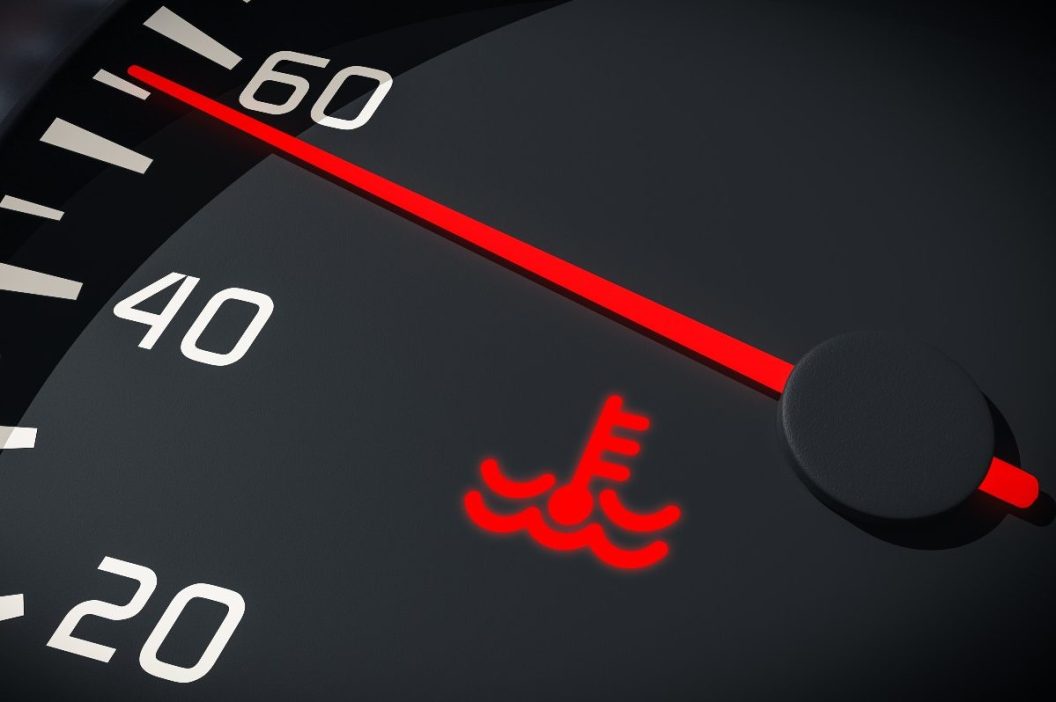Your car is exploding.
Well, more specifically, if you have a vehicle with a combustion engine (as opposed to an electric vehicle), the whole process that makes your vehicle's engine work is a series of very controlled explosions. Explosions, as you can imagine, tend to make things very hot.
Overheating is a very common cause for engine damage. Serious damage can lead to very serious expenses, so you definitely want to keep your engine cool. Luckily, modern automobiles are designed with an entire cooling system to take care of that for you. This system is equipped with a temperature warning light to get your attention when things start to get too hot to handle.
But, sometimes things stop working, for one reason or another. Here's what you should do if you think your engine might be overheating.
Yikes! My Engine Temperature Warning Light Is On!
If you have just started your car and the temperature warning light comes on for a few seconds, fear not. That's just your vehicle running a systems check on the bulb and electric signal. As long as it turns off and stays off, you're in the clear.
If, however, you're driving along, minding your own business, and the indicator light comes blaring on, turn your heater on full blast. No, seriously. This will help redirect some of the heat that's building up under the hood. Next, find a safe place to pull over and let your vehicle cool down.
You don't need to freak out right away. The coolant temperature warning light means something is too hot, and there are many common reasons for heat. Namely, aforementioned explosions. There are plenty of easy fixes here, but you'll want to give your car approximately 30 minutes to cool down before you pop the hood to take a peek.
Inspecting the Coolant
The first place to check is the coolant tank. Be extremely careful when removing the radiator cap or coolant reservoir cap, depending on your vehicle's design. If you're not sure, refer to your owner's manual for a handy diagram. The entire purpose of this cap is to keep boiling water pressurized, which means it, too, can potentially explode and scald you.
Once you're in, check the fluid level of the coolant. If you have a radiator, you want the coolant level to reach the neck of the radiator. If you have a reservoir-type system, there should be a marking indicating "cold full." This is where your engine coolant levels should be when the engine is cool. If you have a low coolant level, this indicates a potential leak.
If this is the case, you can pour water into your radiator in order to limp to a repair shop. You'll likely need help finding the leak and replacing the parts involved.
Different manufacturers use different colors of coolant. Pink, orange, yellow, blue, green, and purple are all possibilities. Regardless of color, it should be translucent, and you should not find dirt or debris in the coolant tank. If you do, that means you're in need of coolant system flush.
If your coolant is pink and creamy, this could be a sign that transmission fluid has gotten into the cooling system. Oil in the coolant is usually a bad sign that points to the head gasket or other serious engine damage. None of these are necessarily great news, but an auto repair technician should be able to get you back on the road.
We also appreciate that not everyone reading this feels comfortable tooling around in the radiator, especially after that "it could burn your face" part. It is absolutely acceptable to call roadside assistance or a tow company if you are unsure of what you're looking for, or if you don't feel comfortable in the location where you pulled over. Your auto insurance carrier may offer these services, too.
Other Reasons for Engine Overheating
A coolant system is more than just a tank of fluid. There are many parts and pieces involved in keeping fluid circulating and heat dissipating.
For example, clamps and hoses. Hoses can develop cracks, and clamps can loosen. There's a lot of heat and movement under the hood, so things tend to wiggle around and deteriorate over time. This is relatively simple, and requires a screwdriver or pliers. Just don't do it with the engine running.
Other parts include the water pump and the cooling fan. These are included to keep the cool fluids flowing in and the hot air blowing out, but they can require maintenance or replacements. You want to be sure to catch these in time, or you'll be looking at some very painful trickle-down damages.
Ask yourself the last time you had an oil change, as well. Check the oil level to make sure you have enough and that it isn't filled with debris. Oil acts as a lubricant for all of the pieces that move in those controlled explosions. When it can't do its job, things get very hot, very quickly.
It is also possible, though less likely, that the temperature gauge is malfunctioning. If nothing else seems to be wrong with the cooling system, it might be an issue with the temperature sensor itself. Since this type of issue is more computer-based than mechanical, you'll need a professional to help you with this.
As always, keeping up with your regular car maintenance is the best way to prevent any of these things from happening. Whether you do your maintenance work yourself or take your vehicle to the repair shop, make sure all of the fluids are checked on a regular basis.
An engine temperature warning light can mean a small adjustment, but if left unchecked, can lead to a very big bill.
Products featured on Alt_driver are independently selected by our editors. However, when you buy something through our links, we may earn a commission.
